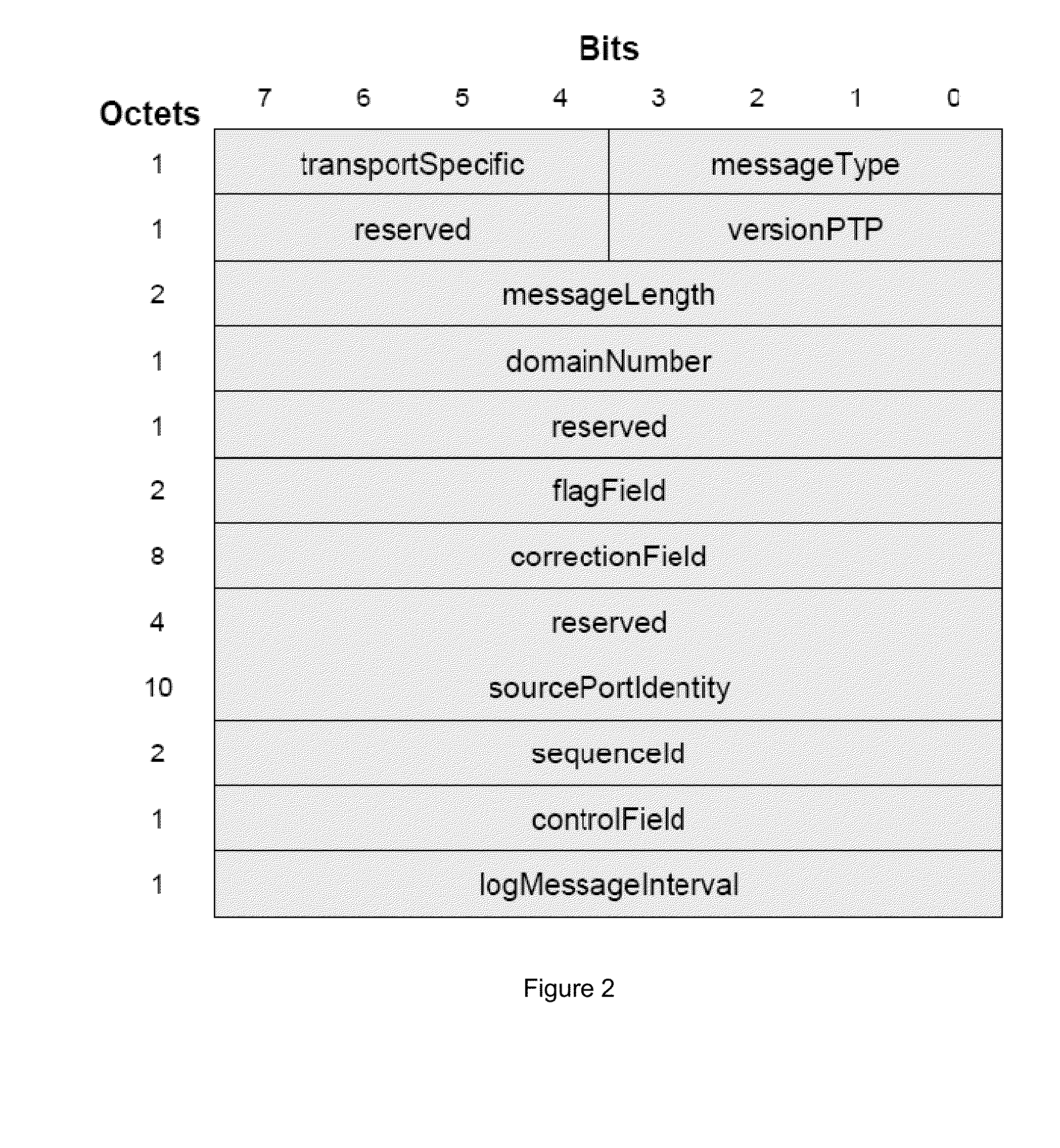Method and system for frequency synchronization
a frequency synchronization and frequency technology, applied in the direction of synchronisation signal speed/phase control, digital transmission, pulse automatic control, etc., can solve the problems of poor synchronization, call drop, and poor synchronization performance of radio access channels
- Summary
- Abstract
- Description
- Claims
- Application Information
AI Technical Summary
Benefits of technology
Problems solved by technology
Method used
Image
Examples
Embodiment Construction
[0063]Accordingly, at its broadest, a first aspect of the present invention provides a method of synchronising the frequency of a slave clock to that of a master, preferably using a packet network.
[0064]A first aspect of the present invention preferably provides a method of synchronizing the frequency of a slave clock in a slave device to a master clock in a master device, the method including the steps of:
[0065]a) receiving in the slave device a first message from said master device having a first time-stamp which is a time-stamp of said master clock indicating the time of sending of said first message;
[0066]b) extracting said time-stamp from said message and initializing a counter in the slave device which counts an output of said slave clock;
[0067]c) receiving in the slave device a further message from said master device and reading the value of said counter at the time of receipt of said further message;
[0068]d) extracting a further time-stamp which is the precise time of sendin...
PUM
 Login to View More
Login to View More Abstract
Description
Claims
Application Information
 Login to View More
Login to View More - R&D
- Intellectual Property
- Life Sciences
- Materials
- Tech Scout
- Unparalleled Data Quality
- Higher Quality Content
- 60% Fewer Hallucinations
Browse by: Latest US Patents, China's latest patents, Technical Efficacy Thesaurus, Application Domain, Technology Topic, Popular Technical Reports.
© 2025 PatSnap. All rights reserved.Legal|Privacy policy|Modern Slavery Act Transparency Statement|Sitemap|About US| Contact US: help@patsnap.com



